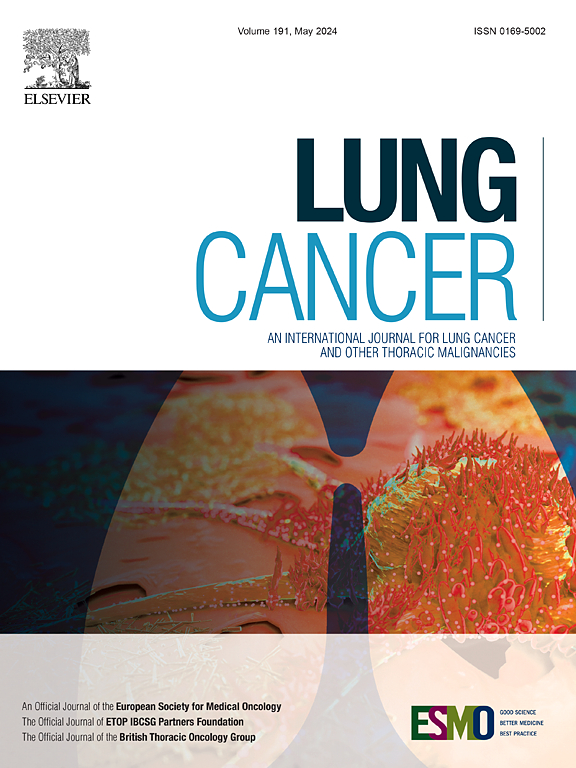Efficacy of antiangiogenic therapy in patients with advanced SMARCA4-deficient thoracic tumor
IF 4.5
2区 医学
Q1 ONCOLOGY
引用次数: 0
Abstract
Background
SMARCA4 (BRG1)-deficient thoracic tumors (SDTTs) are frequently diagnosed at an advanced stage and had poor prognosis, underscoring the critical importance of seeking out novel therapeutic avenues, particularly in the realm of antiangiogenic treatment. However, the efficacy of antiangiogenic therapy in SDTT remains unknown.
Method
We conducted a retrospective cohort study at SYSUCC from August 1, 2018, to August 15, 2024, screening patients diagnosed with advanced SDTTs confirmed by immunohistochemistry.
Results
A total of 151 patients with advanced SDTTs were enrolled in the study, including 49 patients received anti-angiogenic therapy and 102 patients never. The ORR and DCR of first-line therapy with antiangiogenic therapy was 51.4 % and 86.5 %, respectively, compared to only 37.1 % and 78.7 % for those without antiangiogenic therapy. The median PFS of SDTTs treated with antiangiogenic therapy was significantly longer than those without (7.97vs.5.87 months, HR [95 %CI]: 0.612[0.380–0.984], P = 0.043). For patients who did not receive immune checkpoint inhibitors (ICIs), the median PFS of SDTTs treated with anti-angiogenic agent combined with chemotherapy (C + A) was longer than those treated with chemotherapy alone (C) (5.10 vs 2.57 months, HR [95 %CI]: 0.365[0.137–0.968], P = 0.043). For patients received chemotherapy and ICIs, the addition of anti-angiogenic agent (C + I + A) provided significantly longer PFS (11.90 vs 6.90 months, HR [95 %CI]:0.425, [0.221–0.818], P = 0.010). This C + I + A therapy outperforms C + A therapy, showing the longest PFS (11.90 vs 5.10 months, HR [95 %CI]:0.294[0.112–0.772], P = 0.013).
Conclusion
The administration of antiangiogenic therapy shows a promising effect in first-line therapies for advanced SDTT patients. The C + I + A combination therapy is the optimal solution among currently available treatment options.
求助全文
约1分钟内获得全文
求助全文
来源期刊

Lung Cancer
医学-呼吸系统
CiteScore
9.40
自引率
3.80%
发文量
407
审稿时长
25 days
期刊介绍:
Lung Cancer is an international publication covering the clinical, translational and basic science of malignancies of the lung and chest region.Original research articles, early reports, review articles, editorials and correspondence covering the prevention, epidemiology and etiology, basic biology, pathology, clinical assessment, surgery, chemotherapy, radiotherapy, combined treatment modalities, other treatment modalities and outcomes of lung cancer are welcome.
 求助内容:
求助内容: 应助结果提醒方式:
应助结果提醒方式:


